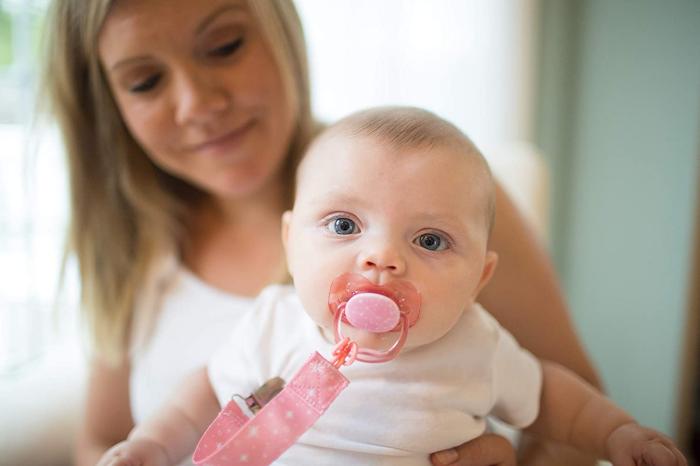Pacifiers are a common tool for soothing infants. They can help calm a fussy baby and promote better sleep. However, keeping pacifiers clean is crucial for a baby’s health. One common question parents have is whether they can wash a pacifier with soap. This article will explore this topic in detail.
Importance of Keeping Pacifiers Clean
Pacifiers come into contact with a baby’s mouth. This makes them a breeding ground for germs and bacteria. Regular cleaning helps prevent infections and illnesses. A clean pacifier also ensures that your baby is not exposed to harmful substances.
Parents should aim to clean pacifiers daily. This is especially important if the pacifier falls on the floor or gets dirty. Knowing how to properly clean a pacifier is essential for every caregiver.
Types of Pacifiers
Before discussing cleaning methods, it’s important to know that there are different types of pacifiers. Most pacifiers are made of silicone, rubber, or latex. Each material may require different cleaning methods.
Silicone pacifiers are the most common. They are durable and easy to clean. Rubber and latex pacifiers are softer but may wear out faster.
Understanding the material helps in choosing the right cleaning method.
Washing with Soap: Is It Safe?
Yes, you can wash a pacifier with soap. However, it is essential to use mild, baby-safe soap. Harsh detergents can leave residue that is harmful to infants.
A simple dish soap without fragrances or dyes is often a good choice. Always rinse the pacifier thoroughly after washing to remove any soap residue.
Using soap is an effective way to eliminate bacteria and germs. This helps ensure the pacifier is safe for your baby to use.
Step-by-Step Cleaning Process
Here is a simple guide on how to clean a pacifier properly:
Gather Supplies: You will need mild soap, warm water, and a clean drying towel.
Prepare the Water: Fill a bowl with warm water. The water should not be too hot, as it may damage the pacifier.
Add Soap: Add a few drops of mild soap to the water.
Soak the Pacifier: Place the pacifier in the soapy water. Let it soak for a few minutes.
Scrub Gently: Use your fingers to gently scrub the pacifier. Pay extra attention to any grooves or crevices.
Rinse Thoroughly: Remove the pacifier from the water and rinse it under running water. Make sure to rinse away all the soap.
Dry the Pacifier: Place the pacifier on a clean towel to dry. Avoid using paper towels, as they can leave lint.
Check for Damage: Before giving the pacifier back to your baby, check for any signs of wear or damage.
Alternative Cleaning Methods
While washing with soap is effective, there are other methods to clean pacifiers as well. Here are a few alternatives:
Boiling Water
Boiling water is a simple way to sanitize pacifiers. Here’s how to do it:
Boil Water: Bring a pot of water to a rolling boil.
Add Pacifiers: Carefully place the pacifiers in the boiling water.
Soak for 5 Minutes: Let them soak for about five minutes.
Remove and Dry: Carefully remove the pacifiers with tongs and place them on a clean towel to dry.
Dishwasher
Some pacifiers are dishwasher safe. Check the packaging to see if yours is. If so, you can place them on the top rack of the dishwasher. Use a gentle cycle for best results.
Sterilizing Solutions
Some parents prefer using sterilizing solutions. These are specially designed for cleaning baby items. Follow the instructions on the package for proper use. Always rinse well after sterilizing.
When to Replace a Pacifier
Even with regular cleaning, pacifiers can wear out. Parents should check pacifiers regularly for signs of damage. Look for cracks, tears, or discoloration. If you notice any of these issues, it’s time to replace the pacifier.
Most experts recommend replacing pacifiers every few months. This helps ensure that your baby is using a safe and effective product.
Pacifier Hygiene Tips
To maintain good pacifier hygiene, consider the following tips:
Wash Hands: Always wash your hands before handling the pacifier. This reduces the risk of transferring germs.
Limit Dropping: If possible, avoid letting the pacifier drop on the ground. This can reduce the amount of cleaning needed.
Use a Case: Consider using a pacifier case when not in use. This helps keep it clean and protected from dirt.
Avoid Sharing: Do not share pacifiers with other babies. This can spread germs and bacteria.
See also: How to Use Pacifier for Newborn: Things You Need To Know
Conclusion
Washing a pacifier with soap is safe and effective. Using mild, baby-safe soap ensures that the pacifier is clean and free from harmful substances.
Regular cleaning and proper care are essential for maintaining pacifier hygiene. Parents should follow best practices for cleaning and storing pacifiers.
By keeping pacifiers clean, you can help protect your baby’s health. Remember to replace pacifiers regularly to ensure safety. With proper care, a pacifier can be a helpful tool for soothing your little one.
Related topics:


